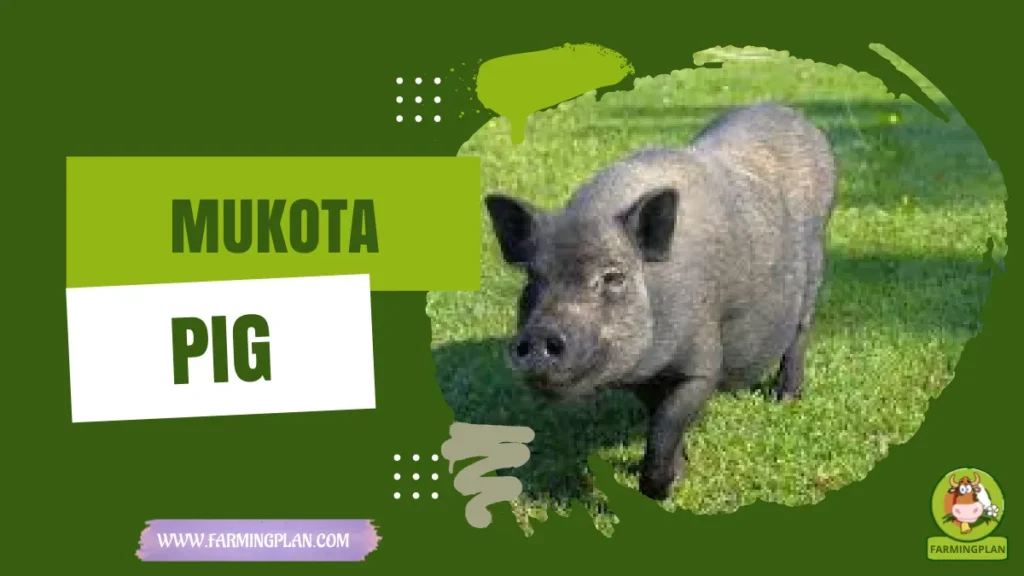Considering goat farming or adding a reliable dairy goat to your herd? The Surti Goat , hailing from Gujarat, could be your perfect match. This breed’s calm temperament, decent milk output, and adaptability to various climates make it a versatile choice. Whether you’re into dairy, breeding, or seeking a docile pet with a purpose, the Surti fits the bill. In this article, I’ll share my insights on Surti goats, from their history and temperament to daily care and farming best practices. Stick with me, and you might just discover your next barnyard favorite.
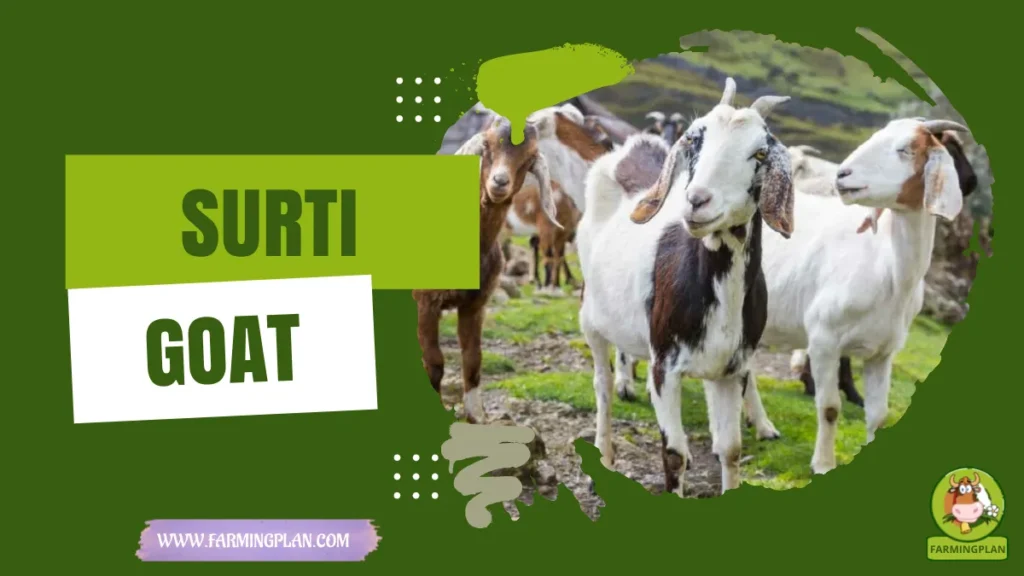
History & Origin of the Surti Goat
The Surti Goat, named after Surat, a district in Gujarat, India, where it originated, has a rich history. Locals have been raising these goats for generations, primarily for their milk. Over time, their reputation spread thanks to their solid productivity in both small-scale and commercial dairy setups. Their adaptability to different climates and their ability to thrive in limited pasture make them a reassuring choice for aspiring farmers.
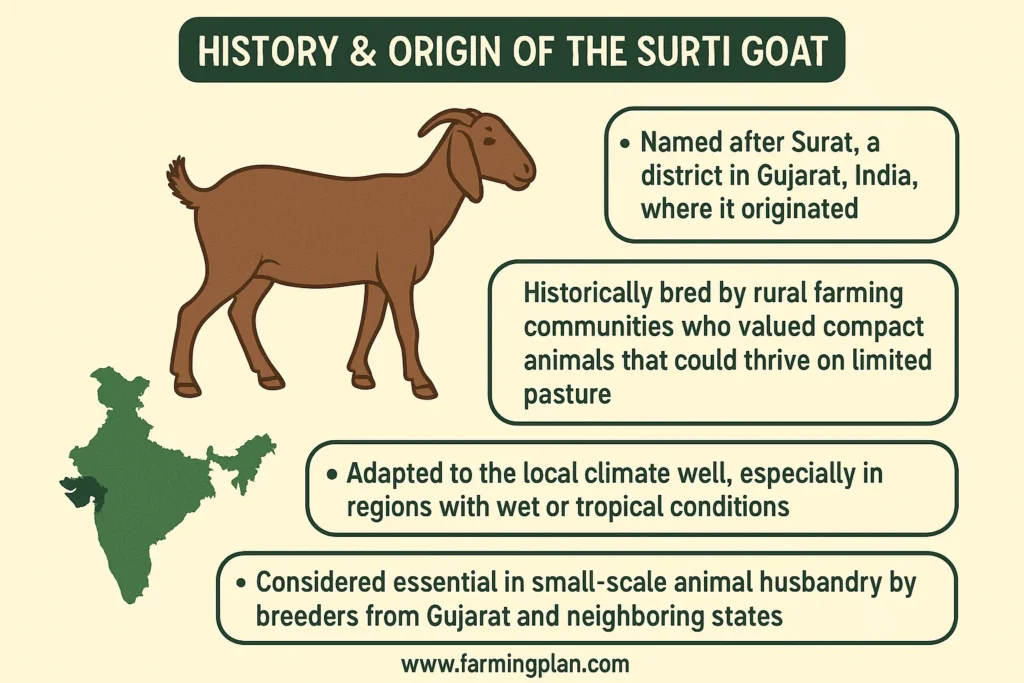
Historically, Surti goats were bred by rural farming communities who valued compact animals that could thrive on limited pasture. These goats adapted to the local climate well and quickly became a staple in regions with wet or tropical conditions. Their adaptability to different climates, including the local climate, is a testament to their resilience. Even today, breeders from Gujarat and neighboring states like Maharashtra and Madhya Pradesh consider them essential in small-scale animal husbandry. Because of their manageable size and decent milk yield, the Surti Goat has also found popularity in cross-breeding programs, helping to improve other regional goat breeds.
Read More: African Pygmy Goat: Tiny, Tough, Adorable
Characteristics of the Surti Goat
Surti Goats are medium-sized animals with a compact, balanced body. Adult males usually weigh around 45 kg, while females reach about 38 kg. They have a short, lustrous white coat, making them easy to spot in a herd.
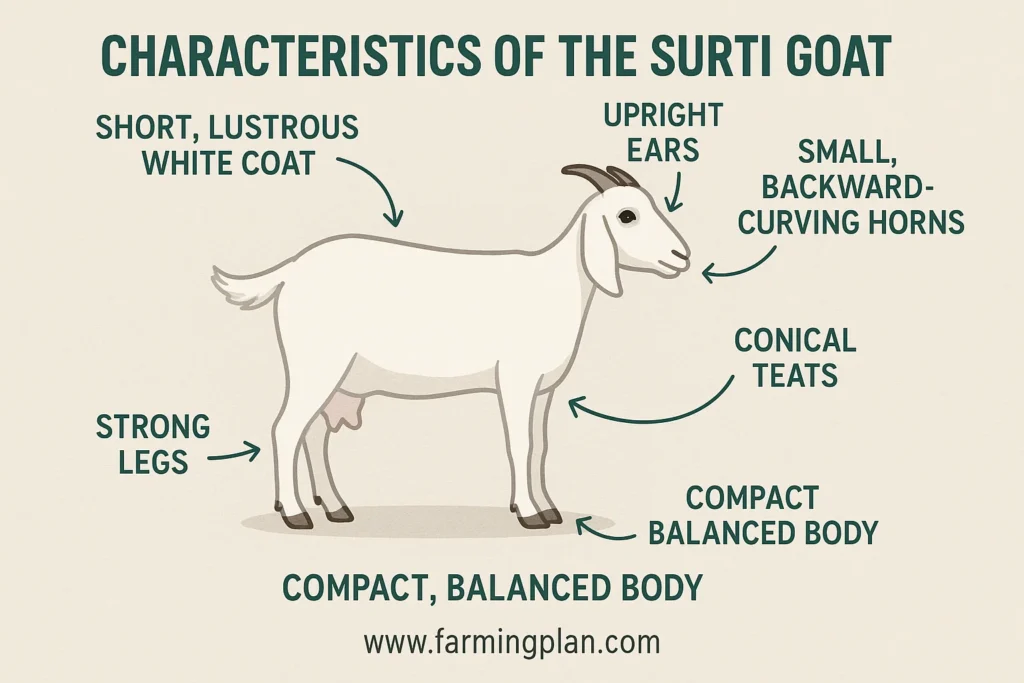
What stands out most is their straight face, upright ears, and conical teats—ideal for milking. Their horns are small and curve backward, which makes handling them a lot easier. Their legs are strong and built for endurance, especially in semi-intensive farming conditions. They’re also known to carry a good amount of muscle, which is a bonus if you’re looking at dual-purpose use. Overall, Surti goats are neither too lean nor overly bulky. They fall right in the sweet spot that makes them suitable for both meat and milk production, though they truly shine in the dairy department.
Read More: Cashmere Goat: That Produces the Best Wool
Nature & Temperament of the Surti Goat
One of the things I love most about Surti Goats is their gentle and docile temperament. They’re not the kind of animals that go jumping over fences or butting heads without reason. Their calm nature makes them perfect for new farmers and even kids who are learning animal care.
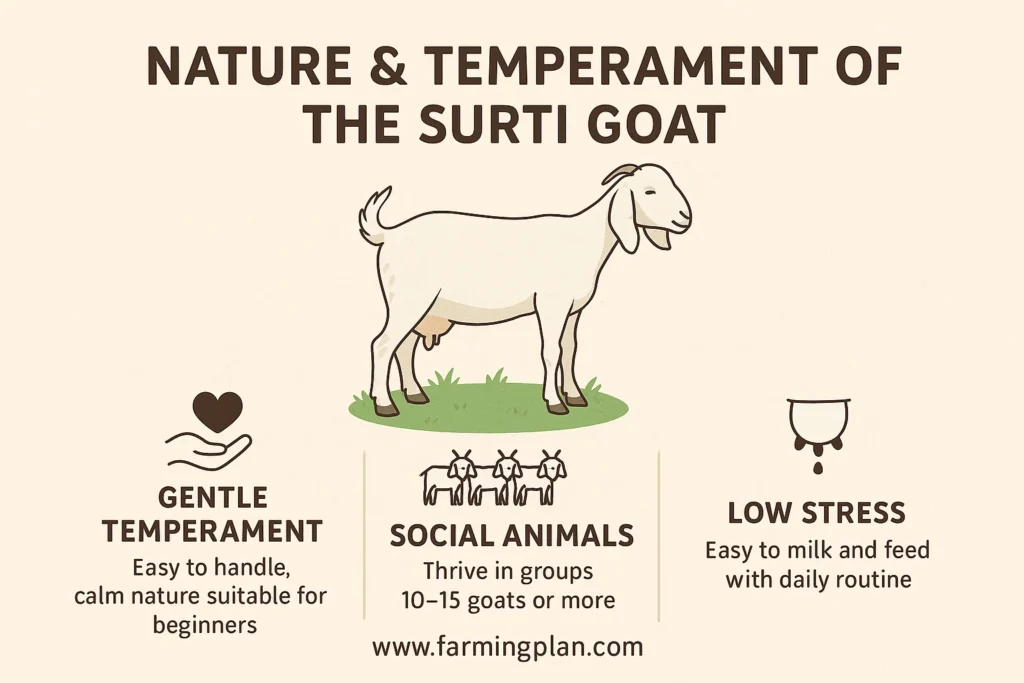
They’re also social animals and thrive in small to medium-sized groups. You can easily keep a herd of 10-15 Surti goats without any trouble. They bond well with other goats and even get along with sheep and cattle, which is helpful if you’re running a mixed farm. Their temperament also helps during milking and feeding times. They don’t stress out easily, which improves their overall productivity and keeps your daily routines smooth and stress-free.
Read More: Thuringian Goat: A German Breed of Goats
Food & Diet of the Surti Goat
Surti Goats thrive on a balanced diet of green fodder, dry roughage, and concentrates. I usually feed mine a mix of fresh green grass, legumes, and occasional tree leaves like neem or babul. Goats love variety, and Surti goats are no different.
They also do well with extensive grazing if you have open pasture, but for dairy productivity, it helps to supplement with protein-rich feed and minerals. Make sure they have constant access to clean, fresh water. Avoid feeding them spoiled or moldy feed—it can upset their stomach and affect milk production. Also, don’t overdo the grains. A couple of times a week, I give my goats a handful of grains like maize or wheat bran for an energy boost.
Usage & Purpose of the Surti Goat
Surti Goats are primarily raised for their milk production, which is rich in fat and very suitable for cheese, curd, and ghee. Their conical teats and steady milk flow make milking easy, even by hand. A healthy Surti doe can produce 1.5 to 2 liters of milk daily.
Besides being great dairy animals, they’re sometimes used in dual-purpose farming. Although they’re not the biggest meat producers, their meat quality is quite good—tender and flavorful. Some breeders also use Surti goats for crossbreeding to improve milk traits in other local breeds like Bengal or Sindhi goats. And if you’re looking for a goat that’s easy to train, handle, and show off at agricultural fairs, the Surti’s calm nature and neat appearance make it a crowd favorite.
Raise Goats With Purpose—Surti Goats Offer The Perfect Mix Of Milk, Maturity, And Manners!
Special Features of the Surti Goat
- Excellent Dairy Qualities: High milk fat content, easy milking.
- Compact Size: Easy to handle, ideal for small farms.
- Climate Adaptability: Can thrive in both dry and wet climates.
- Conical Teats: Perfect for hand or machine milking.
- Lustrous Coat: Helps resist external parasites and keeps grooming simple.
Surti goats are also known for their early maturity, especially in females, which start breeding around 10-12 months. This early maturity promises quicker returns for your investment, instilling a sense of optimism in farmers. They are hardy animals, rarely falling ill when kept in clean, ventilated shelters. Their strong immune system and adaptability to unpredictable weather make them a confident choice for farmers facing farming challenges.
Health Issues & Prevention
Even though Surti Goats are hardy, they aren’t immune to common goat illnesses. Watch out for signs of pneumonia, foot rot, or internal parasites like stomach worms. I recommend regular deworming every 2-3 months.
Also, keep a close eye on their spleen health and digestion—issues here can lead to bloating and poor appetite. Always maintain a dry, clean shelter to avoid hoof problems. Vaccinate them annually for PPR (Peste des petits ruminants), Enterotoxaemia, and Foot-and-Mouth Disease. Good nutrition, access to clean water, and regular check-ups from a local vet go a long way in keeping your goats disease-free.
Step-by-Step Farming Guide
Step 1: Prepare a Clean and Safe Shelter
Start with a well-ventilated, dry shelter. The floor should be elevated to avoid water logging. Each goat needs at least 10-12 square feet of space. Make separate areas for feeding, resting, and milking.
Step 2: Choose Healthy Stock
Buy your goats from a trusted breeder. Check for bright eyes, a smooth coat, and active behavior. Avoid goats with nasal discharge, limping, or bloated stomachs.
Step 3: Balanced Feeding Routine
Offer a mix of green fodder, dry feed, and protein supplements. Add a mineral block in their pen. Feed twice a day and make sure they get 6-8 hours of grazing or exercise.
Step 4: Health Management
Deworm regularly and stick to a vaccination schedule. Groom your goats weekly and keep hooves trimmed. Clean the shelter at least once every 3 days.
Step 5: Breeding and Milking
Pair bucks and does in controlled conditions. Keep detailed records. After kidding, allow the newborn to nurse, then start milking the doe twice daily. Clean teats before and after milking.
Step 6: Monitor Growth and Productivity
Weigh your goats monthly and monitor milk output. Adjust feed accordingly. Keep a farm log to track health, breeding, and milk records.
Expert Tips & Best Practices
- Always keep a first-aid kit nearby.
- Use neem leaves or ash to naturally deter ticks.
- Rotate grazing areas to avoid overgrazing.
- Introduce new feed gradually to avoid stomach issues.
- Practice regular bonding time; goats respond well to kindness.
- Avoid overcrowding to reduce stress and disease.
- Monitor their droppings daily—a great health indicator!
FAQ
What is the average milk yield of a Surti Goat?
A healthy Surti goat gives around 1.5 to 2 liters of milk daily.
Is Surti Goat good for meat production?
While not the largest meat producer, its meat quality is tender and tasty.
Can Surti Goats be raised in wet climates?
Yes, they are well-suited for wet and tropical climates due to their hardy nature.
How much does a Surti Goat cost?
Depending on age and health, Surti goats can cost anywhere between ₹3000 to ₹6000 in India.
Are Surti Goats easy to raise for beginners?
Absolutely! Their calm temperament and low maintenance needs make them ideal for first-time goat keepers.
Conclusion
If you’re looking for a reliable, friendly, and productive breed, the Surti Goat checks all the boxes. It thrives in small spaces, delivers excellent milk, and adapts well to different climates. I’ve seen firsthand how these goats can turn a modest farm into a sustainable dairy setup. Whether you’re a newbie or a seasoned goat keeper, Surti goats offer a hassle-free and rewarding experience. Ready to get started? Connect with local breeders or visit a nearby farm—your ideal dairy companion might just be a Surti!

